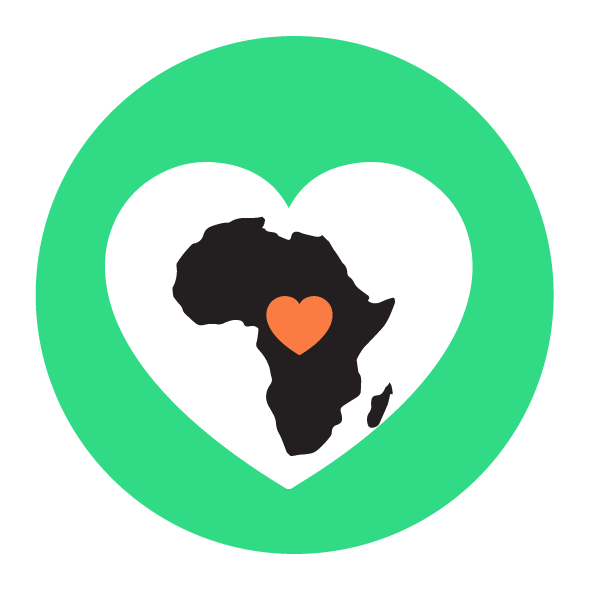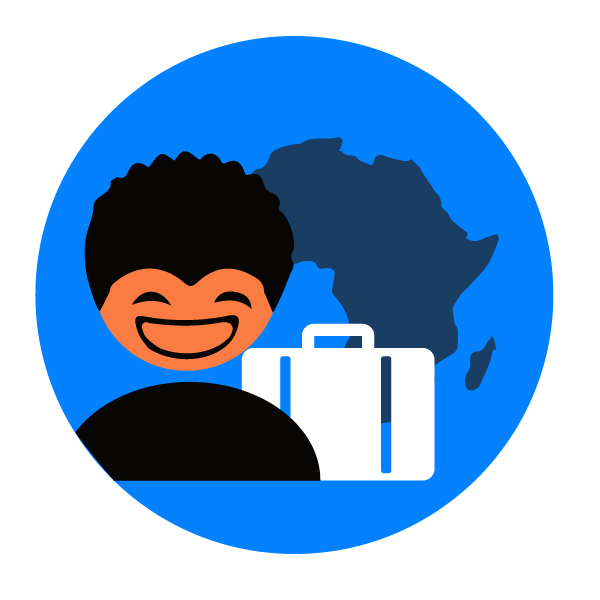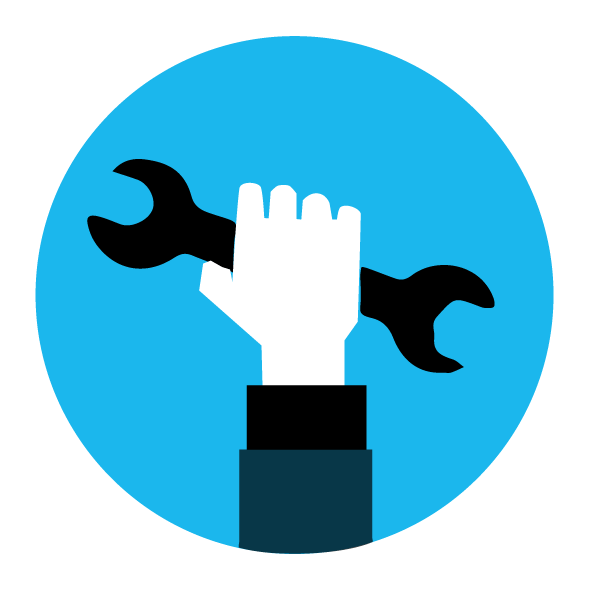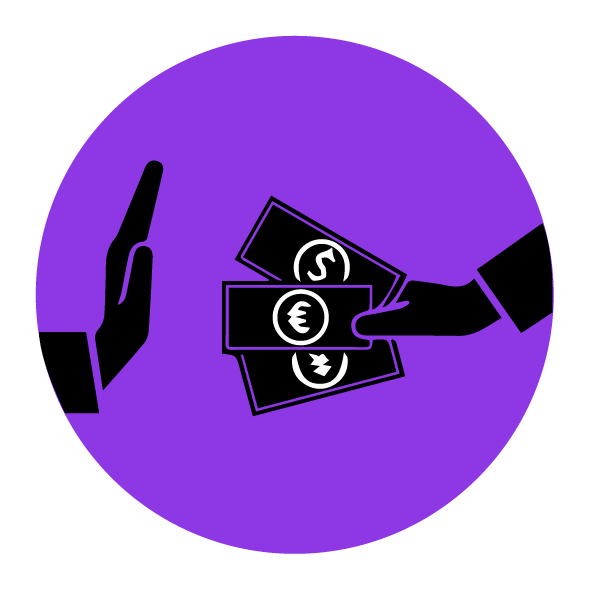Growth on the lion continent shows no signs of slowing down...
...and neither do eager African consumers!
Growth in sub-Saharan Africa is forecast to accelerate to 5.8% in 2015 (IMF, October 2014), driven by the continued convergence of a number of big shifts: expanding middle classes, productive urban centers, better education, deeper mobile penetration, greater access to credit, and more.
In the consumer arena, this will mean rapidly changing demands and expectations from the hundreds of millions of individuals eager to participate in – and benefit from – new opportunities.
10 Trends...
…nay, 10 actionable innovation opportunities!
Amid all that excitement and expectation, how to get an edge?
Switched on business professionals will already be aware of the big currents listed above, and we won’t simply repeat what a thousand articles say about them. Instead, we’re going to get straight to the heart of what consumer trends are all about: unlocking practical and actionable innovation opportunities.
It’s the innovations that you launch in 2015, not the trends you’re aware of, that will delight, surprise and bring love from your current (and future) customers.
So, what are you waiting for? 2015 is already here! Read the 10 trends below and think how each one can inspire you and your team.
Let’s get going!
10 AFRICAN CONSUMER TRENDS FOR 2015
1. HEART ON SLEEVERS »
Tangible, visible and wearable manifestations of cultural heritage.
2. INFO-CHAMELEONS »
Information becomes jollification!
3. BENEVOLENT BRANDS »
Because in 2015, ‘being nice’ pays.
4. DESTINATION AFRICA! »
Intra-continental tourism explodes.
5. BETTER TECH »
Bettering the continent, one ‘tech’ at a time.
10 AFRICAN CONSUMER TRENDS FOR 2015
...continued ;)
6. CREATIVE CROSS-POLYNATIONS »
Collaboration. Curation. Creation.
7. ECO-REVERENCE »
Sexy, sustainable solutions for 2015 & beyond.
8. NEW AFRICAN DEAL »
Empowering the laity.
9. ON-DEMAND DELIGHT »
The ‘Uberfication’ of everything arrives in Africa.
10. BRAND STANDS »
Brands call out corruption in 2015.
1. HEART ON SLEEVERS
Tangible, visible and wearable manifestations of cultural heritage.
HEART ON SLEEVERS
How cultural 'storysellers' will win the hearts (and sleeves) of proudly African consumers in 2015.

In previous trends FOR AFRICA BY AFRICA and NEW AFRICAN NARRATIVES, we highlighted how Africans are flaunting their cultural identities in new ways. The evolution of this phenomenon in 2015? These increasingly confident HEART ON SLEEVERS will celebrate culturally significant causes, movements and heritage in ways that go beyond merely consuming products that are Made in Africa.
In 2015, HEART ON SLEEVERS will also demand that African brands break the cycles of bland consumerism by making even bolder, more expressive (wearable) statements, reinforcing important facets of their culture and deeper beliefs.
So what cultural stories can you visibly embed into your products and services in 2015?
Legacy Collection, Heel The World and MaXhosa by Laduma
In 2014, to celebrate 20 years of democracy, the Legacy Collection by South African Charmaine Taylor, created a limited edition range of art and jewellery pieces fabricated from the Robben Island prison fence that held Nelson Mandela captive for 18 years.
Ghanaian premium shoemakers, Heel The World, announced in 2014 the release of a Black and Gold collection (representing hard work and success, respectively) to celebrate the success of their Empowerment Beads.
In Q2 2014, South African fashion label, MaXhosa by Laduma launched ‘My Heritage, My Inheritance‘. The fashion film for his knitwear collection depicts a tribal initiation. His pieces contain design elements required to be worn by Xhosa initiates after the ceremony.
2. INFO-CHAMELEONS
Information becomes jollification!
INFO-CHAMELEONS
Fun, novel and unconventional information channels will be welcomed in 2015.

Simply put, Africans today are bored of being force-fed contrived, controlled, censored and, yes, dull information. What’s more, they’re ever more aware of the information gaps left by mainstream media and government.
One example? Nine journalists, known for blogging about political repression and human rights, have been detained by the Ethiopian government since April on the grounds that their use of social media causes instability (BBC, July 2014).
In 2015, young Africans are especially looking for creative brands to plug the info-gaps – and do so in a way that is truly engaging. That means delivering useful, necessary information – or boundary-pushing entertainment – via creative, unconventional and playful channels (as JT Rappé do below). Time to get thinking about how YOU can fill information gaps in 2015.
JT Rappé, Mektoube and Cliff Central
JT Rappé, a Senegalese online newspaper delivers local weekly news via YouTube rap videos in both French and Wolof. As of November 2014, there were over 2 million views of the channel.
In August 2014, Muslim dating site Mektoube published Le Famille Bentaba, a satirical online comic tackling taboo, yet relevant issues for Maghreb singles such as racism, divorce and single-parent families.
Launched in May 2014, Cliff Central is a South African online ‘uncensored, unhinged, unradio’ station, which streams shows on popular instant messaging platform, WeChat.
3. BENEVOLENT BRANDS
Because in 2015, 'being nice' pays.
BENEVOLENT BRANDS
Time to flip the social hierarchy in 2015 and serve the African masses.

From unequal societies that only give kudos to the affluent and the authority figures, to archaic work/family/community structures, the African masses are used to being ignored at best and maltreated at worst. And that has extended to the brand/consumer relationship, too.
In 2015, rising numbers will demand that brands become ‘nicer’, by acting in ways that benefit individuals and society as a whole. Like Brandhouse’s roadblock (below), BENEVOLENT BRANDS will find surprising ways to reward customer patronage and good behaviour.
And remember, it’s inevitable that the brands that are benevolent now will earn the trust and gratitude of tomorrow’s middle class consumers. How will you win over, entice, surprise and excite African customers?
Coca-Cola & BT Global Services and Brandhouse & KwaZulu-Natal Liquor Authority
From October 2014, Coca-Cola and BT Global Services began offering free Wi-Fi Internet access to those living in impoverished communities of the Eastern Cape using Coke’s vending machines.
In May 2014, over 250 South African motorists were stopped by traffic police and handed grocery vouchers (if sober), in an attempt to reduce the number of drunk driving-related fatalities on the road. The roadblock was implemented by KwaZulu-Natal Road Traffic Inspectorate and South African alcoholic beverage company, Brandhouse.
4. DESTINATION AFRICA
Intra-continental tourism explodes.
DESTINATION AFRICA
In 2015, smart brands will welcome and cater to African tourists.

As African pride continues to grow, the continent will, in turn, continue to become an attractive travel destination – for other Africans.
No longer will holidaying in Africa solely be about adventurous safari-beach-loving foreigners. Indeed, the African tourism industry has already begun catering to local (and cross-continent) tourists. For example, after stagnating growth the Mauritian government boosted tourism by relaxing visa regimes for over 30 African countries (African Development Bank, 2013).
In 2015, expect travel operators to begin innovating to attract and delight other Africans in search of leisure. Remember, you don’t have to be in the travel or tourism industry to cater to and delight DESTINATION AFRICA travelers!
La Campagne Tropicana and Tastemakers Africa
In early 2014, the Ivory Coast Minister of Tourism announced plans to partner with Nigeria’s La Campagne Tropicana, in order to replicate their African cultural beach resorts in 20 locations across the Ivory Coast.
Launched in November 2014, Tastemakers Africa is an online platform introducing Africa’s cultural scene to young, discerning African travelers.
5. BETTER TECH
Bettering the continent, one technology at a time.
BETTER TECH
2015 will see even more forward-thinking, empowering applications of technology.

Enough has already been said about M-Pesa, USSD, and other jugaad innovation / no-frills / B.O.P / low-tech solutions. And yes, a tech-fueled life is still not on the radar for many Africans.
But progress is happening. One example? Angola Cables plan to increase Africa’s mobile coverage by 20% in 2015 with fiber-optic cables.
With manifold challenges facing the continent – from healthcare to education and more – consumers in 2015 will eagerly reach for smarter tech solutions that truly improve lives, empower individuals and improve wider communities.
You must however move first and fast. Anticipating and responding to tomorrow’s interconnected Africa is an opportunity too hot to bypass.
Google and Samsung
In September 2014, Google brought its Connected Classrooms initiative to South Africa, allowing students across the country to join a virtual ‘field trip’ using Google+ Hangouts.
Downloadable since July 2014, Backup Memory is a mobile app developed by Samsung Tunisia and the Tunisian Alzheimer’s Association to help sufferers of Alzheimer’s connect with and remember loved ones.
6. CREATIVE CROSS-POLYNATIONS
Collaboration. Curation. Creation.
CREATIVE CROSS-POLYNATIONS
In 2015, African nations will strike creative partnerships with those outside the continent.

From Dar es Salaam’s Diamond, to South Africa’s Mafikizolo, culture-craving African consumers (and those in the diaspora) are lapping up a burgeoning array of local talent. Nigerian box office revenues, which have nearly doubled since 2009, are projected to grow an additional 70 percent by 2018 (PricewaterhouseCoopers, September 2014).
Yet the media and entertainment sector also struggles with fundamental shortcomings, such as lack of professional equipment, promotional channels or project funding.
Of course, Africa is brimming with diverse talent awaiting exposure, training, the right resources, and more. So, one key opportunity for non-African nations and organizations in 2015? Creatively cross-pollinate with an African country and fund, collaborate with or contribute to the continent’s creative economies.
One Fine Day Film Workshop, NollywoodWeek and the British Council's Connect ZA
Veve, a Kenyan thriller released in Nairobi in August 2014, is the product of One Fine Day Film Workshop – a collaboration between African film production companies and the German government.
The NollywoodWeek Film Festival’s second edition took place in Paris, in June 2014. The festival, a collaboration with the Nigerian government, screens seven of the most talked about Nigerian films over a four-day period.
The British Council’s 2014-2015 Connect ZA is a collaborative program of creative (art and music) activities and opportunities between the UK and South Africa, in celebration of twenty years of democracy in South Africa.
7. ECO-REVERENCE
Sexy, sustainable solutions for 2015 and beyond.
ECO-REVERENCE
Why African-made, sustainable solutions will rule for 2015's eco-conscious consumer.

Spurred on well-traveled consumers – and a growing appreciation of what it means to live in (and protect) Africa among the non-traveled masses – many are now realising that going green doesn’t necessarily mean ‘backwards’, no-frills solutions.
A growing number of Africans today want to demonstrate respect for their environment through the products they consume.
In 2015, increasing experience of eco-innovations that truly improve quality of life will spur a new ECO-REVERENCE among African consumers, who will embrace a plethora of eco-solutions, and push new, homegrown eco brands further forward.
So how will your products drive the green agenda in ways that will contend with those of the West?
Rethaka, PITCHAfrica and Dumebi Clothing
September 2014 saw Rethaka, a South African female-owned ‘green innovations’ company launch Repurpose Schoolbags: 100% recycled, solar-powered backpacks that can be used as study lamps at night.
Opened in August 2014 in Kenya, the WATERBANK Project is a rain-harvesting school campus that also includes a 1,500-seater soccer stadium, designed by nonprofit design group PITCHAfrica.
Dumebi Clothing is Nigeria’s first homegrown and sustainable bespoke fashion brand.
8. NEW AFRICAN DEAL
Empowering the laity.
NEW AFRICAN DEAL
African workers will demand an invitation to the African growth party in 2015.

Up until now, the unprecedented progress of the continent hasn’t been inclusive of all inhabitants. Take Nigeria, which in April 2014 overtook South Africa to become the continent’s largest economy: 74% of the population remains below the MGI Empowerment Line, which refers to an ‘economically empowered’ standard of living (McKinsey Global Institute, July 2014).
Many hardworking Africans are seeking ways to both contribute to and benefit from growth. In 2015, smart brands will heed the call of the masses and supercharge rising Africa by letting everyone join the party.
Ask yourself: what will the NEW AFRICAN DEAL mean for your brand?
Tomato Jos, For A Fifty and Coca-Cola
A Nigerian startup, Tomato Jos empowers Nigerian farmers through education, logistics and resources that ensure tomato production is a more sustainable and profitable endeavour.
Launched in August 2014, For A Fifty is a South African micro-jobs marketplace that breaks down large outsourced projects into tiny tasks, offering ZAR 50 per task to its freelancers.
In July 2014, 25 Nigerian females graduated from the Lady Mechanic Initiative: an NGO, sponsored by Coca-Cola, providing women with a three-year training program in automotive engineering.
9. ON-DEMAND DELIGHT
The Uberfication of everything arrives in Africa.
ON-DEMAND DELIGHT
Yes, in 2015 Uberfication will be at work in Africa, too!

Cheap labour costs means Africa already has a well-developed mindset around outsourcing everyday tasks. But now, expectations around how that will be done are transforming thanks to Uber and others.
Since 2000, the middle classes of Africa’s 11 largest economies have grown from 4.6 million households to 15 million today (Standard Bank, August 2014). In 2015, these time-stricken, middle class Africans will expect the ability to tap an app or login to an online platform and outsource routine tasks. Accustomed to stressful and inefficient services, they’ll embrace the greater transparency and quality control allowed by outsourcing platforms and apps.
What would your offering look like if it went ON-DEMAND in 2015?
WumDrop, Washist and SweepSouth
Capetonian-based WumDrop provides pick-ups, deliveries and similar courier services on-demand.
Launched in August 2014, Washist, for NGN 10,000 per month, provides on-demand laundry service for Lagosians.
SweepSouth offers domestic cleaning services in South Africa. Due to its popularity, the young company expanded from Johannesburg to Greater Guateng and the Western Cape in late 2014.
10. BRAND STANDS
Brands call out corruption in 2015.
BRAND STANDS
In 2015, African brands will finally take a stand against corruption.

Over half of sub-Saharan Africans believe that their government is largely run by big entities acting in their own best interests, instead of the public good (The African Development Bank, May 2014).
Already some African brands, such as fast-food chain Nando’s, are trailblazers in humorously addressing serious issues regarding governance, politics and corruption (see examples below). And the increasing popularity of their campaigns prove that consumers will look up to and support brands who are brutally honest about corruption.
So for 2015, how your brand can lead the way in taking a stand against the perpetrators?
Nando's: Blue Light Brigade and Every Party Needs A Puppet
First broadcast in August 2014, the controversial Blue Light Brigade advert mocks government officials and their police escorts as they collide at an intersection. The ad’s intention was to spark debate amongst South Africans about issues surrounding government ministers and corruption.
In the run-up to South Africa’s national and provincial elections in May 2014, Nando’s Every Party Needs a Puppet campaign caricatured real-life party candidates. The campaign encouraged viewers to buy finger puppets and tweet open letters to party leaders who they believed were behaving ‘like a muppet’.
Now…over to you!
Take a moment to rate the scale of the opportunities related to these trends (for your/ your clients’ business), and see what others think, too.










